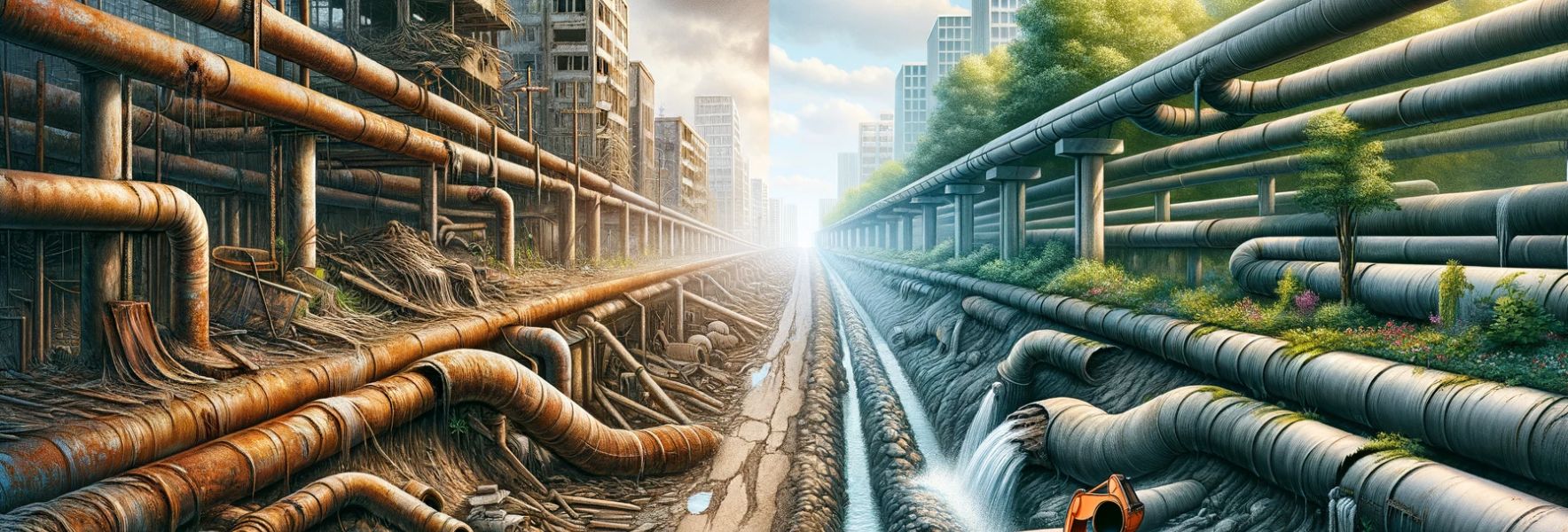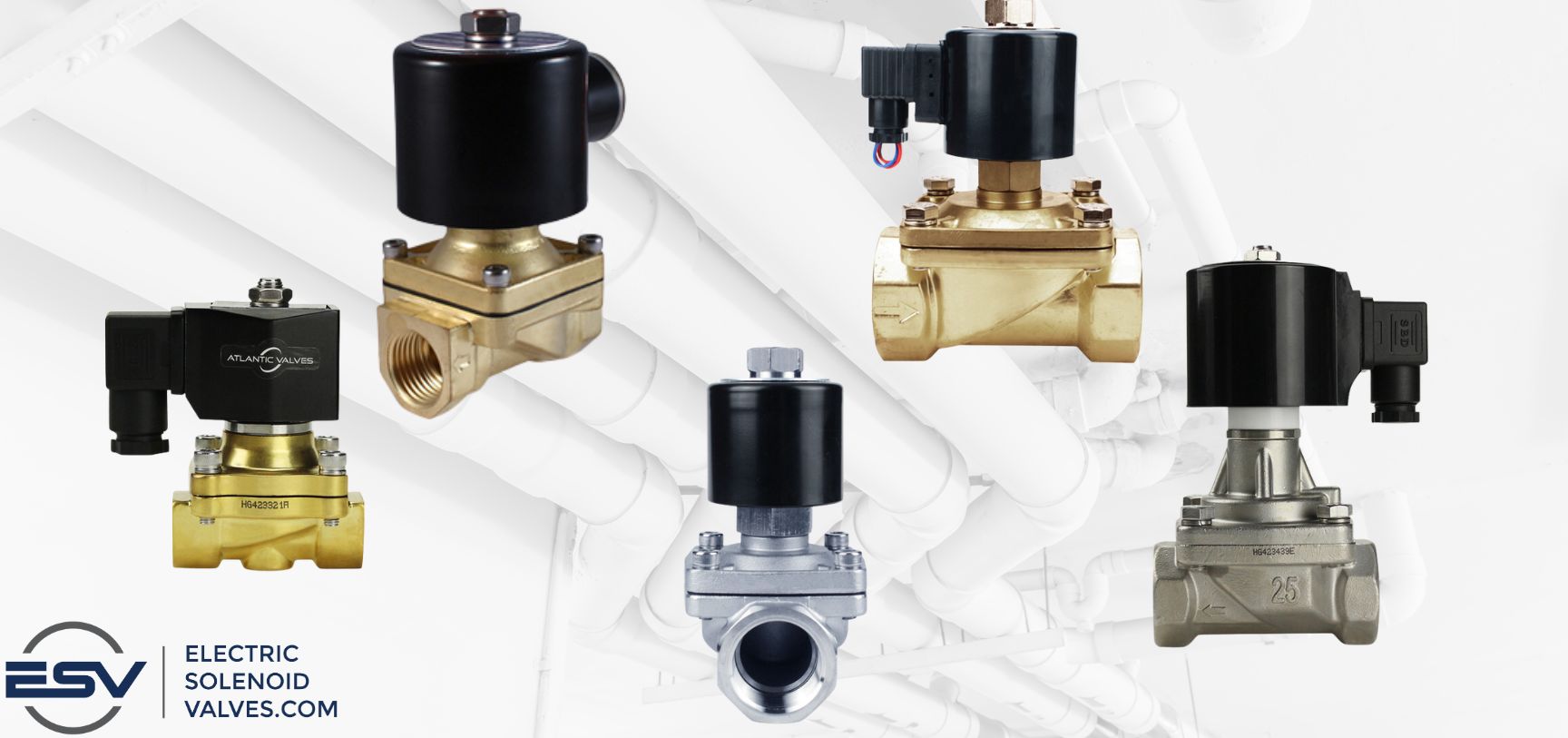Jan 18th 2024
Valve Technology and Market Trends: What to Expect in 2024
Introduction
The valve market continues expanding year-on-year. The positive growth trend presents multiple opportunities for companies manufacturing, distributing, and maintaining valves. This remarkable growth is not just a function of market demand but also aligns with prevailing market dynamics. These dynamics are shaped by factors like increased automation, technological advancements, and a global focus on sustainable energy and infrastructure.
Control Valves
The control valve market is expected to grow at a compound annual growth rate of 13% to reach a market value of $7.63 billion in 2024. The demand for cutting-edge control valve solutions is driven by the escalating demand for fluid control automation across various economic sectors, reflecting substantial innovation within the valve value chain. This innovation leads to the integration of advanced technologies in the manufacturing and operationalization of control valves.
Similarly, the industrial valve market is also witnessing notable growth.
Industrial Valves
The overall industrial valve market is projected tol attain a value of $108.99 billion in 2024, corresponding to a compound annual growth rate of 5% compared to 2023. Factors such as new infrastructure projects, increased investment in the energy sector, improved manufacturing standards, and more stringent regulatory frameworks are fueling this positive trend. Additionally, the global economy is steadily recuperating from the stagnation caused by the COVID-19 pandemic, which had previously stifled supply chains and cross-boundary business activities.
Moving to another key segment, we have the solenoid valve market, which is rapidly gaining momentum.
Solenoid Valves
The solenoid valve market is increasingly gaining popularity across different industries, especially as they complement industrial process automation strategies. Advances in material science and valve control systems continue to spur the demand for solenoid valves in harsh industrial processes, water and wastewater systems, food processing plants and renewable energy projects. Overall, the solenoid valve market will grow at an average compound annual growth rate of 5.4% between 2024 and 2029.
Electric Solenoid Valves - A Market Leader
ElectricSolenoidValves.com stands as a leader in the control valve industry. Our dedication to continuously monitoring market trends allows us to provide invaluable information to our customers, ensuring they remain informed and have access to top-of-the-range fluid control devices. We take pride in offering a wide range of high-quality control and industrial valves, meeting the diverse needs of our clients' projects and guaranteeing the availability of the best fluid control devices for any application.
Here is an overview of opportunities, challenges, and technologies to monitor in the global valve markets in 2024.
Opportunities in Valve Markets in 2024
The figures and financial projections paint a blissful year for companies in the valve value chains globally. How will the progress in different industries impact the demand for industrial valves? Let us dive into the specifics.
Investment in Renewable Energy Projects
Shift in Power Generation
2024 is marked as a pivotal year for renewable energy projects with a surge in demand across various industries. Power generation companies are ditching traditional production practices and embracing power generation from wind, solar, hydro, geothermal and green hydrogen. Power producers are also diversifying energy sources.
Utilization of Specialized Valves
Transition to renewable energy projects demands the utilization of specialized valves to regulate fluid flow through the generation systems. Vital uses of specialized valves in renewable energy projects include:
- Control valves for regulating heat transfer fluids in solar power plants.
- Valves for regulating hydraulic fluids in wind turbines.
- Managing fluid flow in energy storage systems like pumped hydropower plants.
The renewable energy transition necessitates the expansion of power distribution systems. It also involves the integration of new transmission lines with existing infrastructure.
Increasing Demand for Advanced Valves
Such upgrades demand an increase in the number of valves for flow control and regulation. During these upgrades, companies also install newer valves with remote control capabilities for enhanced efficiency and monitoring. The advanced valves use sensors, actuators, and advanced communication systems. Integrating these valves in new renewable energy projects optimizes the safety and performance of renewable energy systems, lowering breakdowns and associated maintenance costs.
Ongoing Infrastructure Projects
Governments and the private sector globally are working on new infrastructure projects, bolstered by initiatives like the Bipartisan Infrastructure Deal (Infrastructure Investment and Jobs Act. These projects are no longer limited to roads and houses alone. Governments and developers focus on sustainable housing projects, new digital infrastructure, and modernized transportation networks. These infrastructure projects integrate different fluid systems and require various valves.
Ongoing infrastructure projects require valves for:
- Regulating fluid flow in water distribution and wastewater management systems
- Flow control in safety and firefighting systems in modernized transport networks
- Fluid control in cooling and air conditioning systems in data centers and digital infrastructure systems
- Regulating compressed air in pressurized air pipelines used for laying fiber optics cables and other digital infrastructure.
New infrastructure projects attract additional industries to produce parts and support the growing population, setting up these new industries creates an added demand for process valves. In 2024, booming and developing economies will continue investing in new infrastructure projects and urban upgrade programs. All these projects will create a ripple effect in the valve market, leading to a growth trend.
Refurbishment and Improvement of Aging Infrastructure

Aging Infrastructure Issues
Decades of wear and tear take a toll on critical civil infrastructure systems. Water, wastewater, and oil and gas pipelines rely on several valves for their daily operations. However, these pipelines may sustain several decades of neglect.
With time, valves on these pipelines lose their reliability due to constant wear and tear. Deterioration due to wear and tear and old age exposes the public to several health and safety risks. Aging of public infrastructure places a financial burden on municipalities, governments, and the public utilities.
Refurbishment Needs
In 2024, refurbishing and improving aging infrastructure remains a top priority for municipalities and governments globally. Refurbishing public infrastructure reduces the need for frequent repairs and component replacements. Refurbishing aging water pipelines involves replacing old valves with more efficient models. These valves can reduce leaks and enhance the quality of water reaching customers.
Refurbishing systems like oil and gas pipelines allow companies to install safer and more reliable valves containing enhanced safety features like leak-proof valves. These refurbishment measures are essential for preventing environmental contamination and promoting the sustainability of public infrastructure projects. Newer valves are energy efficient and thus can save the public millions of dollars on annual energy and pumping costs.
Municipalities, public utility companies and governments will continue refurbishing and upgrading aging infrastructure in 2024. Part of modernizing our infrastructure includes updating fluid systems with components like electric ball valves, known for their efficiency and reliability in controlling water flow. The demand for infrastructure modernization presents an opportunity for the valve industry.
Increased Demand for Automation

Safety, efficiency, and quality are at the heart of modern industries. The demand for industrial valves continues to grow as more companies digitize their operations. The maturity of smart systems and technologies continues to revolutionize industrial process design and data-driven operations. Industries are significantly shifting from old valves to improve productivity and enhance process control and monitoring.
In 2024, orders for advanced and automated valves from existing and emerging industries will increase. These valves offer more value for money and allow companies to combat the prevalent challenges in industrial fluid flow applications. Automated valves are easy to integrate with other industrial automation systems, giving industries a reliable option to monitor flow control operations in real time.
As industries increasingly adopt automation, the role of components like pneumatic solenoid valves becomes crucial for efficient operation. Automating industrial valves enhances predictive analytics, providing companies with adequate data for customizing maintenance operations and averting breakdowns.
Advanced Technology
Technological changes cut across industries. These changes have significant impacts on the valve value chains. Technological changes continue manifesting in 2024 and will affect how valves operate and their manufacturing practices.
Progress in artificial intelligence (AI) will be pivotal in automating industrial valves in demanding environments like oil and gas production and power generation systems. AI and advanced valve connectivity through sensors and actuators present more opportunities for industries to streamline and automate fluid systems. These technological advances will increase the demand for industrial valves in different sectors in 2024.
Advanced technology facilitates innovation in valve manufacturing materials and processes. Industries will have access to specialized valves manufactured from advanced materials like composite polymers capable of handling the most demanding fluid flow conditions. Technologies like digital twins enhance planning and virtual visualization for the renovation and refurbishment of aging infrastructure and old process valves.
Globalization and International Trade

Global trade will continue to grow in 2024. Economic growth in developing nations continues to promote the establishment of local industries. Industrialization in small and big economies is steadily increasing the demand for different valve types. With the globalization of industries, products like low pressure gas solenoid valves are seeing increased demand, especially in residential and commercial HVAC systems.
Countries and regional economic blocs continue signing trade agreements that revolutionize supply chains and trading landscapes. It allows companies in the valve value chain to conduct their business beyond their countries of origin. The evolving trade environment, harmonized valve standards, and standardized regulations give companies in the valve market opportunities to trade globally and in destinations of their choice. This is vital for increasing valve trade across local and regional boundaries.
Leveraging Differentiation and Innovation in Valve Markets in 2024
After understanding how different sectors of the economy will impact the demand for valves globally, what new opportunities exist for companies in the valve market?
Specialization and Niche Valve Markets
Although plenty of opportunities for valves exist in 2024, companies in this sector will compete for customers. The focus should shift from huge trade volumes to sustainable long-term business development and growth. Companies dealing with industrial valves can achieve this by specializing in specific valves and identifying a niche market. Some specialization options to consider are:
- Smart valves catering to particular industries. For example, electric solenoid valves for wastewater treatment plants.
- High-performance industrial valves. These can include cryogenic valves for chemical processing plants, automated control valves for high-temperature and high-pressure fluid applications or 3-way electric ball valves for oil and gas applications.
- Eco-friendly valve solutions. Consider stocking eco-friendly valves compliant with sustainability regulations associated with particular industrial operations. The eco-friendly valves should have low energy consumption rates, utilize recycled materials for manufacturing and provide optimal value to the environment.
Increased Integration of Sustainable Valve Solutions
Another way to differentiate valve businesses in 2024 and capitalize on the positive market growth trend is by integrating multiple sustainable features into industrial valves. Some sustainability solutions to consider in the valve value chain include:
- Reliance on eco-friendly valve manufacturing materials - Consider the possibility of bioplastics and lightweight composites to manufacture valve components. These materials have a lower environmental footprint and can differentiate your products from competing market options.
- Optimize energy efficiency of valves - Design energy-efficient valves to reduce the total amount of energy required to operate process valves. Energy consumption costs by process valves can shoot to thousands of dollars per month if the company uses several valves for a process. Lowering energy consumption per valve can yield positive financial savings for industries, increasing the popularity of a particular valve type.
- Promote valve recycling and material recovery efforts - It will reduce the pressure on the raw materials needed to manufacture valves and their replacement components. Utilize advanced valve manufacturing methods focusing on reducing material waste. Consider manufacturing options like additive manufacturing.
Investment in High-Performance Valves
The demand for high-performance valves will continue growing as companies operationalize more complex industrial processes. Complex industrial processes are now possible thanks to enhanced automation systems. Such processes require high-performance valves to accommodate critical fluid flow conditions.
In 2024, companies in valve value chains can differentiate their businesses by investing in research and acquiring patents for advanced materials, valve manufacturing techniques and digital valve solutions. Such proactive approaches to industrial valves ensure companies can provide reliable flow control solutions for any possible industrial process.
Differentiation and innovation will be critical for any company in the valve manufacturing and distribution market in 2024. Gaining an edge over other market competitors demands the implementation of different solutions. Companies should focus on:
- Product customization - provide solutions addressing specific customer needs. Valve solutions must address the critical flow control challenges fronted by the customer. Leverage digital design tools to simulate flow conditions and develop virtual valve prototypes before physical production.
- Advanced material research - look beyond ordinary valve manufacturing materials. Explore ongoing research in material science to identify the most promising valve manufacturing materials for future flow control devices. Consider focusing on features, material compatibility, and cost savings.
- Digital transformation in the valve value chain - the value of digital transformation in industrial fluid control is more evident in 2024 and beyond. Look beyond the Industrial Internet of Things (IIoT). Explore how to develop advanced digital platforms for collecting and analyzing valve performance data. Focus on data analytics to gain valuable insights to optimize valve performances in different industries. Implement blockchain technology to enhance tracking and quality control management of industrial valves.
Through differentiation and innovation, companies can enjoy a better market share and premium product prices and improve their global product recognition. Innovation can also position a valve manufacturing and distribution company as a sustainability partner that can support the long-term aspirations of its clients.
Challenges To Watch in Valve Markets In 2024
Although 2024 will be a bright year for companies in the valve value chain, some challenges may slow down this anticipated growth. Companies in this market should develop proactive measures to address any potential challenge and ensure they can serve their clientele adequately and maintain their competitiveness beyond 2024.
Challenges to watch in 2024 include:
Geopolitics and Supply Chain Challenges
Trade wars and sanctions between countries and regional economic blocs can erupt anytime. When such situations occur, traders and manufacturers experience longer lead times, inflated business costs and supply chain interruptions. Increased costs due to geopolitics and supply chain interruptions are passed down to the valve buyers and can lead to lower sales.
The ongoing war between Russia and Ukraine and political tensions in the Middle East due to the Israel-Hamas war can have far-reaching implications on global supply chains, leading to delayed deliveries and higher costs of business. Companies in the valve value chain should monitor global geopolitical situations to effectively develop robust mitigation measures to combat any likely supply chain interruptions and maintain adequate supplies to satisfy prevailing market demands.
Material Costs and Inflation
The prices of raw materials for manufacturing valves keep fluctuating daily. The cost of raw materials like steel, copper, and brass change over time. Price changes are due to market dynamics and related logistics bottlenecks. Controlling these prices is beyond valve manufacturers and distributors. Increased material costs increase the cost of manufacturing. It leaves manufacturers and distributors with slim profit margins.
Inflation due to rising labor costs, unforeseen increases in material and logistics costs and national or global economic inflation can equally reduce returns from valve manufacture and distribution. Such occurrences further stifle the positive growth trajectory predicted for the global valve market.
Labor Shortages
A shortage of skilled labor in the market can result in delays in valve manufacturing and cause delays in installation and commissioning. Such inefficiencies eat into the already slim profit margins. Additionally, the valve value chain is experiencing skill gaps among its skilled workers. There is a limited workforce to spearhead the digitalization and automation of new valves. The skill gaps reduce the ability of valve manufacturers to scale the implementation and adoption of emerging digital technologies.
Manufacturers and valve traders should invest in relevant training programs to upskill the existing workforce. Additionally, manufacturers can partner with digital transformation consultants to reduce the digital skill gap among their workers.
Rapid Technological Changes
Valve manufacturers face a challenge with the rapidly changing technology. Emerging technologies disrupt established valve manufacturing practices, and some companies may not effectively adapt to these changes. Some companies may also hold on to obsolete valve technologies, losing their market share and stifling the innovative potential of their products.
In 2024, companies should identify advanced technologies that can enhance their competitiveness and focus on stepwise implementation of digital solutions to avoid the common digital transformation pitfalls and implementation challenges.
Cybersecurity Threats

Interconnected industrial assets are prone to cybersecurity attacks. Attackers can leverage sensors and IIoT systems associated with automated process valves to stage attacks and steal crucial information about industrial processes and personal data. Cyberattacks can disrupt industrial processes and lead to heavy financial losses. While manufacturers are improving cybersecurity defenses in automated industrial valves, there remains a need for every player in the valve supply chain to spruce up the security of interconnected valves.
Competition and Counterfeit Products
Global trade has opened enormous business opportunities for valve manufacturers and distributors. Valve manufacturers compete globally, each striving to deliver high-quality products at acceptable market rates. Competition can cause pricing pressure, forcing manufacturers to reduce their profit margins. At the same time, counterfeit products have equally emerged. These counterfeit products pose safety risks as they may not comply with the existing market standards. Counterfeit products can negatively affect the market trust of reputable valve manufacturers.
Companies can develop dynamic pricing models to accommodate pricing shocks due to the liberalized global markets in 2024. That way, they can adjust market prices to remain competitive irrespective of the prevailing valve market conditions. Manufacturers can employ advanced technology like blockchain to improve the traceability of valves through the market chain and prevent counterfeiting.
Final Words
As we look towards 2024, it's clear that the valve industry is poised for significant opportunities and growth. From advancements in technology to the expanding role of valves in renewable energy and infrastructure, the landscape is evolving rapidly. These changes offer numerous possibilities for valve manufacturers, marketers, and distributors worldwide, with each region presenting unique prospects.
At Electric Solenoid Valves, we're not just observers of these trends; we're active participants and innovators. Our commitment to providing high-quality, cutting-edge valve solutions positions us to meet these emerging needs and challenges head-on.
We invite you to join us on this journey. Whether you're seeking to upgrade your current systems, explore new technologies, or simply wish to stay informed about the latest developments in the valve industry, our team is here to assist. Reach out to us to discover how our products and expertise can support your goals in this dynamic market. Together, let's embrace the opportunities of 2024 and beyond.


